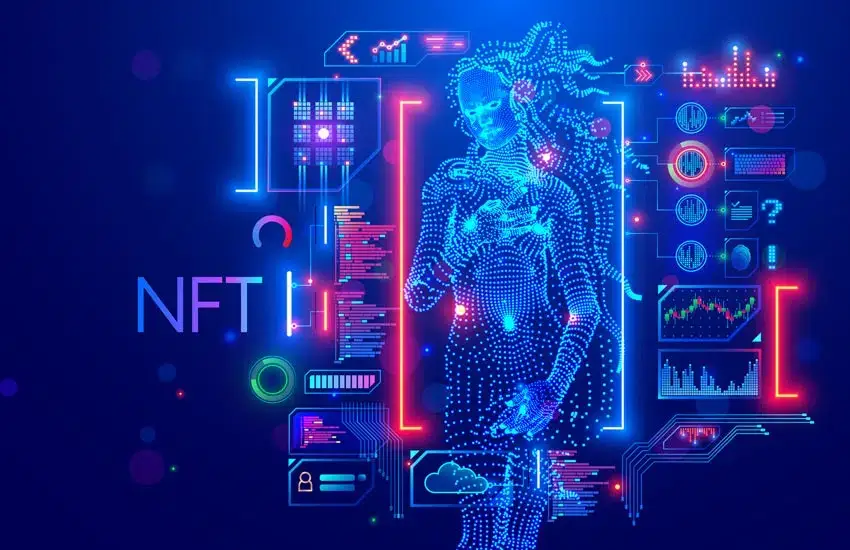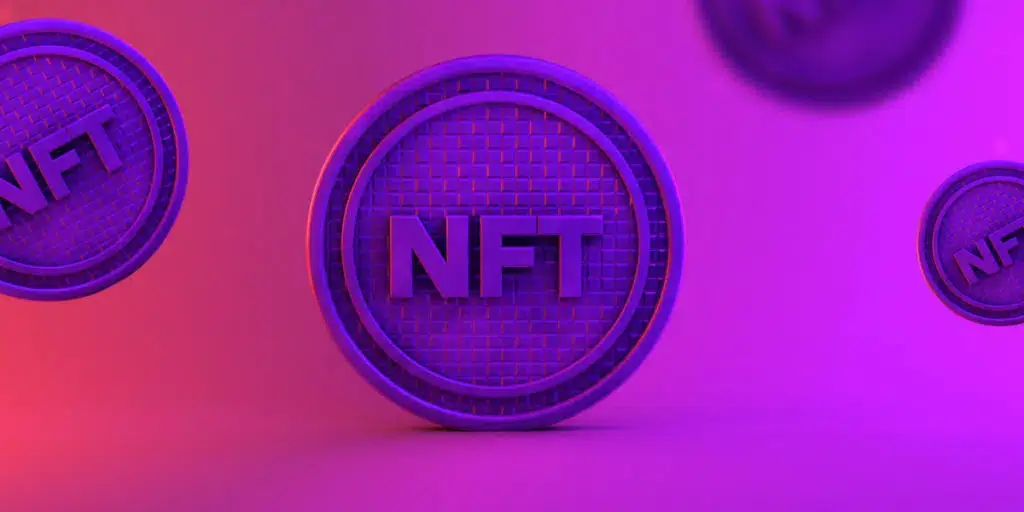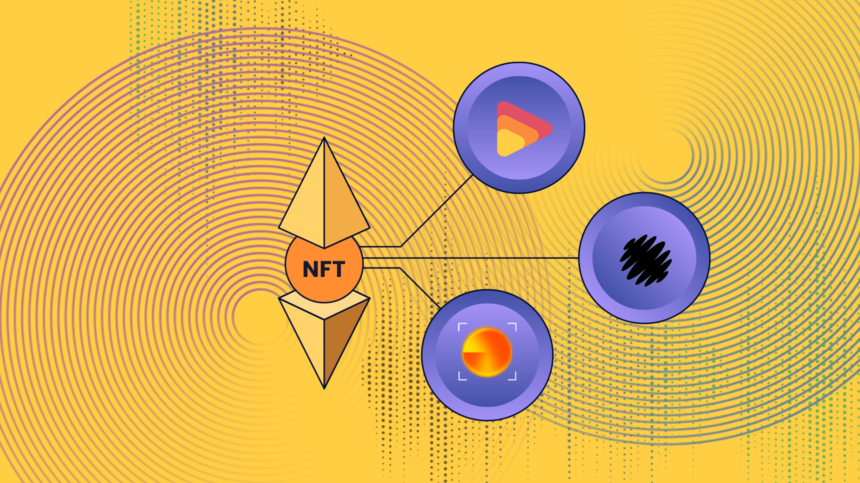How do I create my musical NFT?
Making music today is easy enough. All you need is equipment, knowledge, persistence, and a bit of talent. It’s not easy to find an interesting idea for releasing your music. That’s why many artists and producers are interested in making music NFT.
If you’re an artist, musician or producer, you must be familiar with the blockchain trend regarding non-interchangeable tokens (NFT). The music industry is constantly evolving, which means that new means of distributing art are becoming commonplace for cryeiters looking for out-of-the-box solutions.
Consequently, many of them are now thinking about how to create a music NFT in particular and its benefits.
In this article, we will learn how to create a musical NFT on Ethereum, and more specifically, we will look at each step of the process of creating your own NFT using OpenSea. In addition, we will look at some of the advantages and disadvantages of this new format, and along with that, the best NFT music platforms.

What is NFT?
Non-exchangeable tokens (NFTs) are cryptographic digital representations of assets on a blockchain. Each NFT contains unique metadata that gives the owner ownership. Unlike fungible assets such as the U.S. dollar (USD), Bitcoin (BTC) and Ethereum (ETH), NFTs do not serve as a medium of exchange.
Therefore, non-interchangeable assets are unique. Anyone can “tokenize” almost any asset in the form of a non-exchangeable token (NFT). Some of the best-known uses of NFT include art, digital real estate, cryptogames, certification, identification and music.
In addition, NFT holders have a fully transparent history of their online asset purchases. This is especially important for digital collectibles because it provides holders with provably scarce assets that are fully decentralized and transparent.
NFTs contain a unique digital identity that verifies authenticity and ownership. The best known types of NFTs are the Ethereum ERC-721 and ERC-1155 standards. The ERC-721 standard requires NFTs to identify the asset owner, metadata and security data, which is ideal for exchanging rare in-game assets.
So how do music NFTs work?
Music NFTs allow artists and producers to create limited editions of rare tracks and releases. Unlike traditional formats, NFTs cannot be illegally copied or duplicated. Each music NFT can be a digital representation of a song or release, in addition, music NFTs can contain some sort of bonus, in the form of concert tickets or ownership of rare merchandise.
NFTs also allow artists to interact with audiences. So, fans can show off their musician or band by buying their rarest releases. The first big stars to launch their NFTs were Steve Aoki, Kings of Leon, Tory Lanez, 3LAU, Dillon Francis, Katy Reggae and Deadmau5. Nevertheless, the NFT trend continues to evolve, and is in full swing throughout the music industry.
How to Create a Musical NFT
Now let’s take a look at exactly how to create a musical NFT. The process of creating an NFT is called “minting.” We will use the Ethereum blockchain for the example. Ethereum is the base for blockchain and Web3 development work, and contains many of the most famous NFT trading platforms. Thus, we have conditioned the choice of our example.
We will create an NFT using an audio file. You can also include illustrations, visuals, and many other extras. Once we have the source music ready, we will also need something called an Ethereum wallet. A crypto wallet is what we use to store our cryptocurrency and send it to other wallets.
To do this, we tell the Ethereum network in our crypto wallet that we want to send a certain amount of ETH to another wallet address. After we have deposited the recipient of our ETH, we sign the transaction to confirm our actions in the wallet.
The most popular marketplace for buying, selling, and creating NFTs is OpenSea. To interact with the OpenSea NFT marketplace, you will need a Web3 wallet and some ETH. In this example, we will use the MetaMask wallet. MetaMask is the most widely used Ethereum wallet and is ideal for interacting with NFT marketplaces such as OpenSea.

How to download MetaMask
You can download MetaMask as a web browser extension. After downloading, you will need to make a copy of the source phrase. The source phrase is a set of randomly generated words that you need to write down and save in a very safe place. Never give your source phrase to anyone else, and always keep a backup copy of it in a safe place.
MetaMask is not a custodial wallet, which means that you can control all the assets you keep in your MetaMask wallet.
After installing MetaMask, you will need to fund your wallet. You can purchase ETH using a centralized cryptocurrency exchange such as Coinbase or Binance. You will need to register and verify your identity to successfully register on the exchange, after which you can link your bank account and buy ETH.
Create an OpenSea account
Although creating an account with OpenSea is free, you will need ETH to pay transaction fees known as “gas fees.” The gas fees fluctuate depending on the load on the network. You can wait until the load on the network decreases, thereby avoiding high fees.
After you buy ETH, you will need to transfer it to your MetaMask wallet by copying the corresponding wallet address and sending ETH to it from the centralized exchange of your choice.
Now it’s time to create an OpenSea account. First, you need to allow OpenSea access to your MetaMask wallet. Follow the instructions on the screen and create a “new item” by uploading an audio file. In this example, we will simply upload a single audio file. However, you can upload multiple files as part of a collection or include additional content.
Come up with a name for your NFT, provide the URL of the audio file, a description, and create a collection for your NFT. Select the number of issues, the unlockable content, and write an expanded description in the field provided. Click “Create.” This process will require some ETH for gas.
Once the transaction is confirmed in MetaMask, your NFT music will be offered for sale through your OpenSea profile. While there are many other reputable NFT music platforms, OpenSea is by far the most widely used. But you can also search and use other NFT trading platforms of your preference.
How to sell NFT music
Many people jokingly refer to OpenSea as “eBay for NFT.” You can choose a variety of extras to sell with your music. Whenever an NFT music is resold, the artists who released it can get an extra percentage of the deal.
Not too long ago, artist 3LAU made headlines in crypto-space by giving the highest bidder in the NFT auction the opportunity to collaborate with the musician himself on a new release. So, the added utility helps increase the hype around the NFT project, which contributes to higher prices for the project.
Pros and cons
Selling music through NFT music platforms offers new opportunities to attract an audience. In addition, the NFT industry is a space that promotes innovation and blurs the lines between art and technology.
But, because NFTs are relatively new, it means that music NFTs may be limited in their appeal to audiences that are inexperienced with NFTs. In addition, if you’re a completely unknown artist, you probably can’t expect to get an immediate and large return on your musical NFTs.
Regardless, NFTs provide artists and producers with real-time royalty payment opportunities. Blockchain has a transparent history of ownership of non-transferable assets, which means that this technology reduces counterfeiting and illegal copying.
There are also technical risks involved in the process of creating an NFT. If you’ve never used a crypto wallet or paid for gas in Ethereum before, you could suffer financial losses if you make a mistake. Conversely, the advantage of publishing music as an NFT is that you can do it without intermediaries. Once you upload a track to the NFT trading platform, you control any income generated from it yourself.
What’s more, you don’t have to pay a label, management or ticketing company to make money from NFT. In addition, music NFTs can be tiered to fit different budgets and levels of fan engagement.
NFT music platforms
OpenSea is undoubtedly one of the best NFT music platforms. However, it may be worth checking out some of the other popular NFT music platforms. For example, Rarible NFT is a pretty thriving ecosystem.
Also, Opulus and Audius are some of the most popular NFT music platforms. These platforms offer industry services to help you produce NFT music. Other well-known NFT music platforms are BitSong, HUSL and Rhythm (from BeatPlaylist).

The bottom line
Understanding how to create NFT music can give you an edge for your release. However, NFTs are experimental, so it’s not unreasonable to lower your expectations a bit, even if you’ve had successful releases in the past.
The music industry may not be quite ready for NFT, but this technology is designed to change the way records are distributed to audiences.
After reading this article, you should have a clear idea of how to create NFT music using one of the most popular NFT music platforms. Launching music as an NFT provides many innovative opportunities to interact with fan audiences.
In addition, learning how to create NFT music using a platform like OpenSea gives you access to the wider world of NFT art and decentralized finance (DeFi). The MetaMask Web3 Wallet, which we reviewed in this article, gives you access to a host of DeFi protocols and Web3 applications.
